
A Gallery of Complex Functions
by François Labelle
|
On these pages, you will see maps of the argument (also called phase) of some complex functions. For clarity and aesthetic reasons, I chose to disregard the magnitude completely. There are other galleries of complex functions on the Internet that will show both information. The color assignment is : 1 -> blue, i -> magenta, -1 -> red, and -i -> black. When the four colors are touching at a point, it means that the point is a zero or a pole (infinity). The resolution is of 5 pixels per unit. The range of every image is from -30 to 30 for both the real and the complex axes, except for the band on the left which is the Riemann zeta function from -5 to 5 and from -5*i to 435*i. |
Page 1: Miscellaneous functions
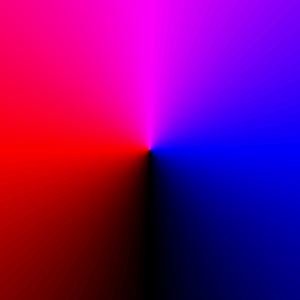 f(z) = z. This shows which color gets assigned to each complex number. The center is a good example of what a zero looks like. |
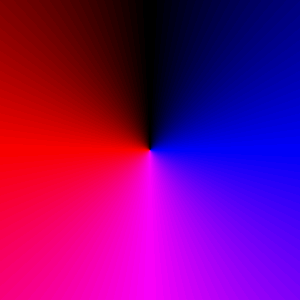 f(z) = 1/z. The center is a good example of what a pole looks like. You can distinguish between a zero and a pole by the order in which colors appear as you go around counterclockwise. |
 f(z) = z^2. Recall: 1 or -1 squared give 1 (blue), i or -i squared give -1 (red). |
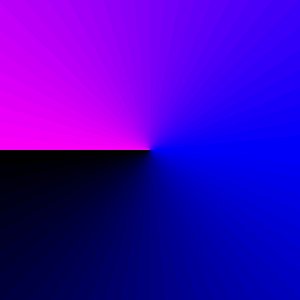 f(z) = sqrt(z). As in the real case, we need to make a choice between two possible square roots. Whatever the choice, there will be at least one discontinuity, which is usually put pointing toward the left. |
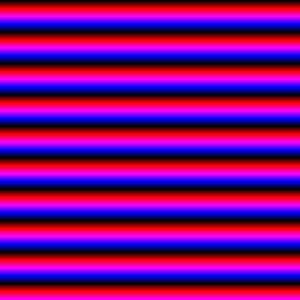 f(z) = exp(z). The exponential growth cannot be seen because this is a phase diagram. The phase is cyclic along the imaginary axis with period 2*pi. |
 f(z) = log(z). Recall that for 0<x<1, log(x)<0, which is seen as a small red island. |
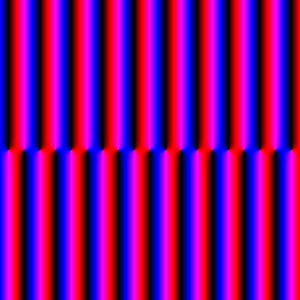 f(z) = sin(z). Note the series of zeros at each integer multiple of pi. |
 f(z) = tan(z). Alternation of zeros and poles along the real axis. |
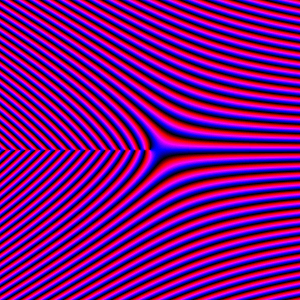 f(z) = gamma(z). The gamma function extends the factorial function to arbitrary complex numbers: gamma(n) = (n-1)!. It has poles at z=0,-1,-2,... For more information, see Eric Weisstein's page on The Gamma Function. |
 f(z) = zeta(z). The Riemann zeta function. It has one pole at z=1 and trivial zeros at z=-2,-4,-6,... . The Riemann Hypothesis asserts that all non-trivial zeros are along a vertical line with real part exactly 1/2. For more information, see Eric Weisstein's page on The Riemann Zeta Function. |
- Page 1: Miscellaneous functions
- Page 2: The Maclaurin series of exp(z)
- Page 3: The Mandelbrot set iteration
page last updated: March 16, 2002